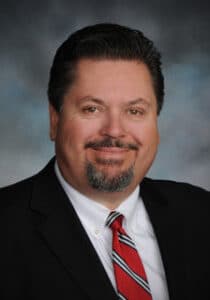Richard Urias: CCAP Newsletter Board Spotlight
 Richard has worked with good and not so good charter schools and found that the best of them share at least one essential element: knowledgeable authorizers that provide effective oversight.
Richard has worked with good and not so good charter schools and found that the best of them share at least one essential element: knowledgeable authorizers that provide effective oversight.
But Urias, who joined the board of California Charter Authorizing Professionals in November 2019, does not blame authorizers for lacking information and expertise. He believes that the key obstacle to increasing the number of high-quality charter schools in California is by improving the charter authorization process. Urias described it as a “mishmash” of confusing and insufficient support, resources, and processes for school district authorizers and it was affecting student learning.
“I saw situations where money was being spent to educate students and it wasn’t the quality education outlined in the charter petition that those students should have been getting,” said Urias.
He is optimistic that the system will significantly improve through Charter Authorizing 2.0, CCAP’s statewide initiative to improve authorizing by providing support and developing toolkits that guide authorizers through complicated processes of reviewing petitions, preparing annual reports, providing fiscal oversight, measuring achievement to ensure that all students’ needs are met.
Urias has firsthand experience grappling with the patchwork of information and support.
In 2014, he became Director of Charter School Support and Oversight for the Ventura County Office of Education. The county office of education had jurisdiction over six charter schools authorized by the county board. Another nine in the region were district-sponsored, but they often requested help from Urias’ office. When he sought assistance to compile information for the authorizers and answer their questions, no one had an official list of experts. He tracked them down one by one.
“I would meet with one and then at the end of that conversation I would say, ‘thank you for your time, do you know of anybody else I could reach out to for more information?’ And then they would give me another name, and then I would do the same thing with that person, and that’s how I got to know all the players eventually.”
Urias provided district authorizers with the most current resources and changes in charter school law, advised them on best practices, such as reviewing charter school finances and achievement data and urged them to visit their charter schools at least once a year.
Urias had the time to conduct research and gather information because it was his job; he was paid to do this work, he noted. But for many school districts, overseeing a charter school is “an extra thing on your plate” that they simply do not have the capacity or budget to do properly, he explained. “My feeling was it’s so difficult for me and I’m doing this full time, what about people who just don’t have the time to do it? It’s impossible.”
Urias has since left the County Office of Education for his current position as principal of Oxnard High School but continues working with charter school authorizers as a consultant. He said he understands the potential for tension between standards and charter schools’ mission to be innovation laboratories with more freedom than traditional public schools, but emphasizes that Charter Authorizing 2.0 is not creating a rigid, official process; it is a research-based set of common protocols and practices designed to help authorizers provide the best possible oversight. It also benefits charter schools to know that there are clear expectations.
“For everybody not to have access to these model documents and processes and systems seemed really inefficient because there was so much out there that wasn’t good, that wasn’t high quality. It just didn’t make sense to me how we hadn’t already done this work and why the state hadn’t done it either through the California Department of Education,” said Urias.
Even with a common set of performance indicators, Urias is concerned that small school district authorizers will always face a shortage of staff able to devote the necessary time to charter school oversight. One possible solution, he said, is for a dual approach in which districts do the authorizing while the oversight is handled by a group of experts in each region of the state.
There would be an “economy of scale” with full-time professionals able to provide comprehensive oversight, said Urias, “which, when done correctly, results in greater outcomes for students.”
